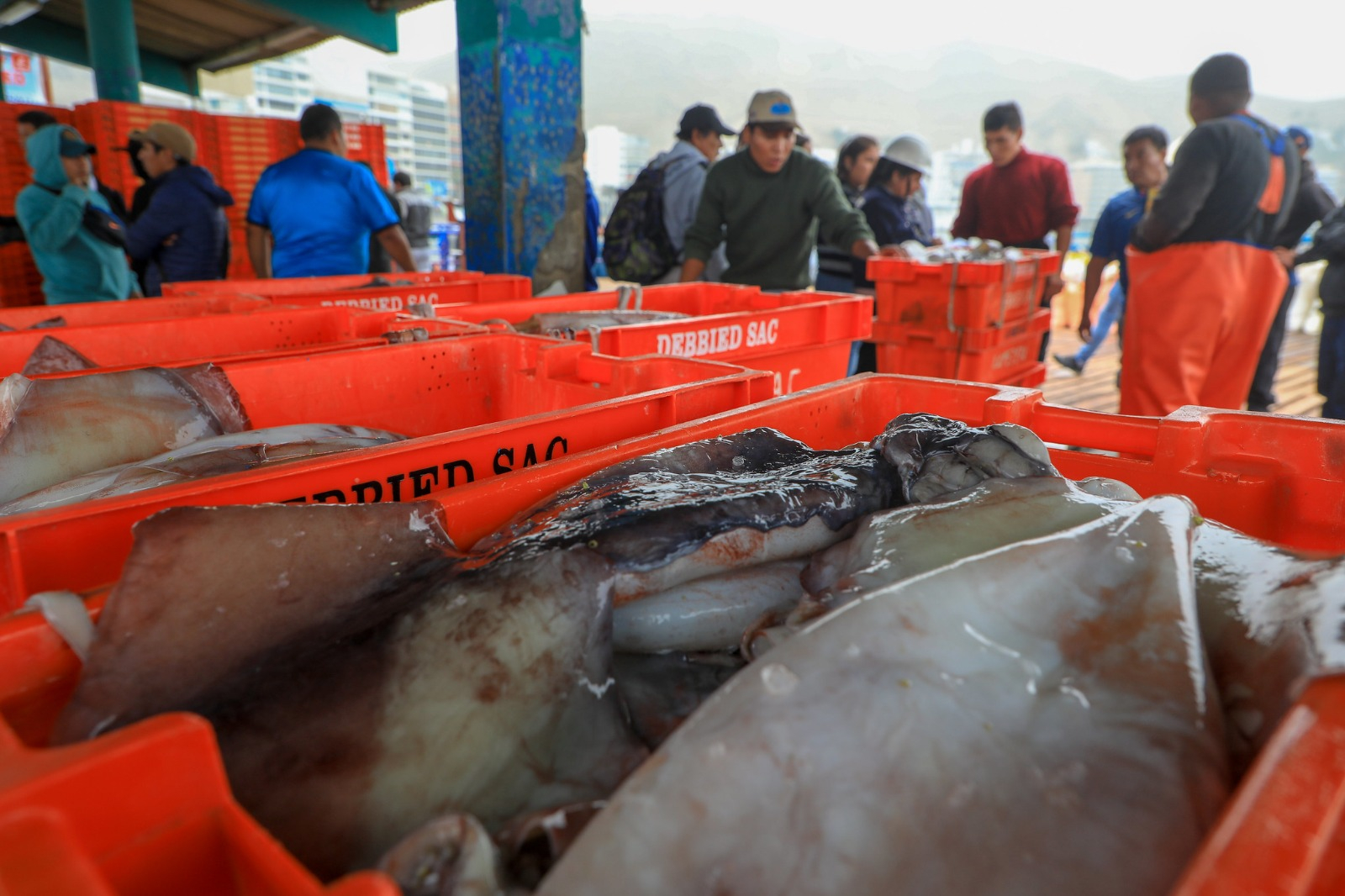
For the first semester of 2023 (January-June), there was a fishing landing of 476,500 tons, which represented a significant increase of 150.1%, compared to the same period last year, reported the Ministry of Production (Produce).
The largest discharge occurred in Paita (Piura), with 359,700 tons, which is equivalent to 75.5% of the total landed to date. They are followed by Santa, in Áncash (3.5%); Pisco, in Ica (1.8%).
What is the main destination product of the squid?
According to information from Produce, the 94.8% of the landing of squid was destined for the production of frozen products. The main demand is given by the industrial plants located in Paita (63.3%), where 185,900 tons were distributed as raw material. Other requests are from Sullana (15.7%), Sechura (5.8%), San Juan de Miraflores (4.3%), Callao (3.2%) and Chilca (3.0%).
In addition, the production of these frozen products was 293,400 tons during the first half of 2023, an amount 158.2% higher than that reported in the same period of the previous year (113,600 tons). The destination was export.
On the other hand, the remaining 5.2% (24,800 tons) was destined for the internal sale of the fresh product, whose average price was S/3.4 per kilogram in the fishing wholesale markets. It should be noted that this value is 16.5% lower, in relation to the costs in the same period in 2022 (S/4 per kilogram).
Scope in GDP
In the first six months of the year, squid extractive activities contributed 13.4% of the extractive fishing GDP. This is equivalent to an added value of S/101 million, at constant prices since 2007, which makes this weight the second most important, after anchovy, in Peru.
Source: Larepublica
Alia is a professional author and journalist, working at 247 news agency. She writes on various topics from economy news to general interest pieces, providing readers with relevant and informative content. With years of experience, she brings a unique perspective and in-depth analysis to her work.











